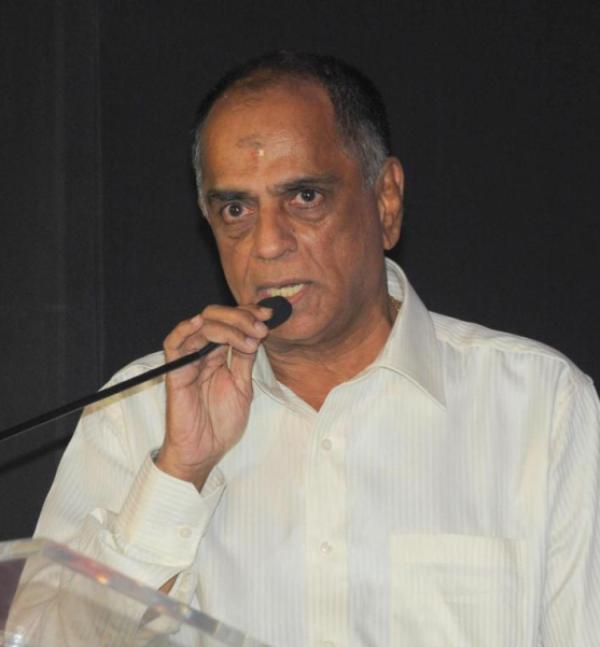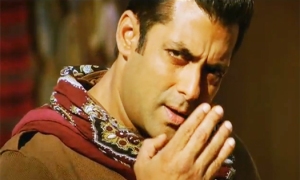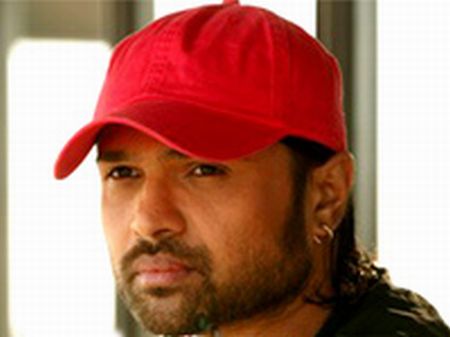कल शाम को चैनल बदलते बदलते, या फिर ये कहिये कि OTT बदलते बदलते, नज़र एक तमिल फिल्म पर आकर टिकी. नाम था, मंडेला.
खाना खाते खाते फिल्म का पहला आधा घंटा देखा. मज़ा आया. फिल्म एक ब्लैक कॉमेडी है और ब्लैक कॉमेडी और हमारा तो पुराना याराना है. खैर, फिर कुछ काम आ गया इसलिए पूरी फिल्म नहीं देख पाया. एक-आद दिन में निपटा दूंगा.
रात को तकिये पर सर रखने से लेकर नींद आने तक, मेरे दिमाग में एक ख्याल आया. आजकल हमारे लिए एक हिंदी फिल्म देखना बहुत ही मुश्किल हो गया है.
एक ज़माना था जब हम सिनेमा निर्मल आनंद के लिए देखते थे. अब हम फिल्म निर्मल आनंद के साथ साथ, इंटेलेक्चुअल सटिस्फैक्शन के लिए भी देखते हैं. और जब तक इंटेलेक्चुअल सटिस्फैक्शन नहीं होता तब तक निर्मल आनंद भी नहीं आता है.
अब जनवरी 21, 1994, की बात ले लीजिए. राँची के सुजाता सिनेमा में डेविड धवन कृत राजा बाबू लगी थी. हम लोग फर्स्ट डे फर्स्ट शो देखने पहुंचे. लाइन में लगे और थोड़ी धक्कम धुक्की होने के बाद हम लोगों को ड्रेस सर्किल की टिकेटें मिल गयी. ये वो दिन थे जब फिल्म देखने से ज़्यादा मज़ा फिल्म की टिकट मिलने में आता था.
फिल्म शुरू हुई. वो गोविंदा का ज़माना था. और अगर साथ में अगर करिश्मा कपूर, कादर खान, शक्ति कपूर, समीर, आनंद मिलिंद और डेविड धवन, भी हों, फिर तो सुभान अल्लाह. गोविंदा के अलावा ये सभी लोग राजा बाबू से जुड़े थे. पर फिल्म में वो मज़ा नहीं था जितना कि गोविंदा की फिल्मों में अमूमन हुआ करता था.
दो घंटे से ऊपर गुज़र चुके थे और पूरे हॉल में एक सनाटा सा छाया हुआ था. लग ही नहीं रहा था कि गोविंदा की फिल्म चल रही है. उसी साल आयी द्रोहकाल, जो कि एक ज़बरदस्त आर्ट मूवी थी, के शोज में, उस दिन से ज़्यादा हल्ला हुआ था. (जी हाँ हम उस समय भी आर्ट फ़िल्में देखा करते थे वो भी सिनेमा हाल में जाकर).
फिल्म ख़त्म होने से कुछ समय पहले, परदे पर आया उस साल का एकदम सुपरहिट गाना. सरकाये ल्यो खटिया जाड़ा लगे. और पब्लिक ने तब तक गोविंदा और डेविड धवन से हुआ सब गिला शिकवा माफ़ कर दिया. कुमार साणु और पूर्णिमा के इस गाने ने एकदम बवाल मचा दिया. अगर अंग्रेजी में कहें तो द ऑडियंस वास् डांसिंग इन द aisles.
वो ज़माना था डबल मीनिंग गानों का और सरकाये ल्यो खटिया जाड़ा लगे, मेरे हिसाब से, इन डबल मीनिंग गानों की लिस्ट में नंबर दो की पायदान पर आता है. आप पूछेंगे कि नंबर वन गाना कौन सा था. अब ये भी कोई बताने वाले बात है. हिंदुस्तान में रहकर, हिंदी सिनेमा देखने के बाद अगर इतना भी नहीं पता… तो आप एंटी नेशनल, टुकड़े टुकड़े गैंग में शामिल हो चुके लुट्येन्स दिल्ली के आखरी लिबरल हैं.
ख़ैर, आप भी ये सोच रहेंगे के मैं भी कहाँ मंडेला से शुरू करके राजा बाबू तक पहुँच गया. शायद ये समझाने की कोशिश कर रहा था कि उस ज़माने में फिल्मों से सीधी सीधी अपेक्षा होती थी.
फिल्म का हीरो थोड़ा रोमांस करेगा, गाना गायेगा, नाचेगा, विलेन की पिटाई करेगा और अगर इन सबके ऊपर अगर कॉमेडी भी करे, फिर तो पूरा पैसा वसूल.
रही हीरोइन की बात तो वो भी रोमांस करेगी, गायेगी, नाचेगी और थोड़ा रोयेगी.
अगर फिल्म में विलेन है तो वो हीरो-हीरोइन के बीच में अपनी टाँगे अड़ाएगा. जैसा की मोहनीश बहल मैंने प्यार किया में कहते हैं, एक जवान लड़का और एक जवान लड़की कभी अच्छे दोस्त नहीं हो सकते. पहले कुछ इस किस्म उलटी-पुलटि बात करेगा और अंत में हीरोइन के साथ थोड़ी बहुत बदतमीज़ी भी, जिसके बाद हीरो आकर उसकी पिटाई करेगा.
हीरो की माँ रोएगी और अपने बच्चे के लिए अच्छी नौकरी और अच्छी बीवी की दुआ करेगी.
और फिर, एवरीवन विल लिव हैप्पिली एवर आफ्टर.
अगर किसी भी फिल्म में इन सब चीज़ों का ठीक ठाक सा मिश्रण मिल जाता था, तो लोग उस फिल्म को दो एक बार देखकर चला ही देते थे. और हम भी ऐसी पब्लिक का हिस्सा थे काफी सालों तक. कम से कम 1993 से 1999 तक, जब हम रांची के सिनेमा घरों में अक्सर सिनेमा फर्स्ट डे फर्स्ट शो देखा करते थे. (करीब दस साल हो गए कोई भी फिल्म फर्स्ट डे फर्स्ट शो देखे हुए. अब जब आराम से ऐसा किया जा सकता है, तो मन नहीं करता है.)

1999 के बाद चीज़ें बदली. थोड़ा पढ़ लिख ज़्यादा गये. थोड़ा अंग्रेजी सिनेमा देख लिया. और 2006 से 2009 के बीच में बहुत सारा इंटरनेशनल सिनेमा भी.
अंग्रेजी फ़िल्में देखने के बाद ये पता चला की उनकी फ़िल्में हमारे फिल्मों से कितनी बेहतर बनती हैं, या फिर हम लोग सीन बी सीन कॉपी करते हैं. अब शायद पॉसिबल नहीं है पर एक ज़माने में तो होता ही था. यकीन नहीं आता तो कभी 1934 की हॉलीवुड फिल्म, इट हप्पेनेड वन नाईट देखे और इसके बाद महेश भट की 1992 की फिल्म दिल है के मानता नहीं. सीन बाय सीन कॉपी है.
यहाँ तक कि इट हप्पेनेड वन नाईट के डायलॉग्स को सीधे सीधे हिंदी में ट्रांसलेट किया गया है. और आश्चर्य की बात तो ये है कि डायलाग लिखे थे मशहूर लेखक शरद जोशी जी ने.
जब इंटरनॅशनल सिनेमा देखा तो ये समझ आया की सीरियस मुद्दों पर भी फ़िल्में बनायीं जा सकती थी. और रोमांस, नाच, गाना, मार धाड़ के अलावा, फिल्मों में नुआन्स (nuance) भी हो सकता है. और निर्मल आनंद के अलावा फ़िल्में इंटेलेक्चुअल सेटिफेक्शन भी दे सकती हैं.
और धीरे धीरे इंटेलेक्चुअल सटिस्फैक्शन हावी होता गया. केवल ये काफी नहीं था कि स्क्रीन पर क्या चल रहा है. ये भी जानना ज़रूरी था की फिल्म के डायरेक्टर और लेखक की पॉलिटिक्स क्या है. उन्हें इंस्पिरेशन कहाँ से मिला है. फिल्म के डायलॉग्स में दम है की नहीं. वगैरह वगैरह. एक फिल्म देखने में और एक किताब पढ़ने में ज़्यादा अंतर नहीं रह गया.
और इसका नतीजा ये हुआ की धीरे धीरे हिंदी फ़िल्में देखना एकदम बंद सा हो गया है, क्यूंकि किसी भी फिल्म से जो उमीदें थी, वो बहुत ज़्यादा बढ़ गयी. और जैसे जैसे हमारा टेस्ट बदला वैसे वैसे गोविंदा का करियर भी ख़तम होता चला गया. क्यूंकि गीता का सार है, परिवर्तन ही इस दुनिया का नियम है.
अब खोज रहती है अच्छी फिल्मों की. भाषा चाहे कोई भी हो, क्यूंकि मर्द को दर्द नहीं होता और इंटेलेक्चुअल सटिस्फैक्शन ज़रूरी है.




